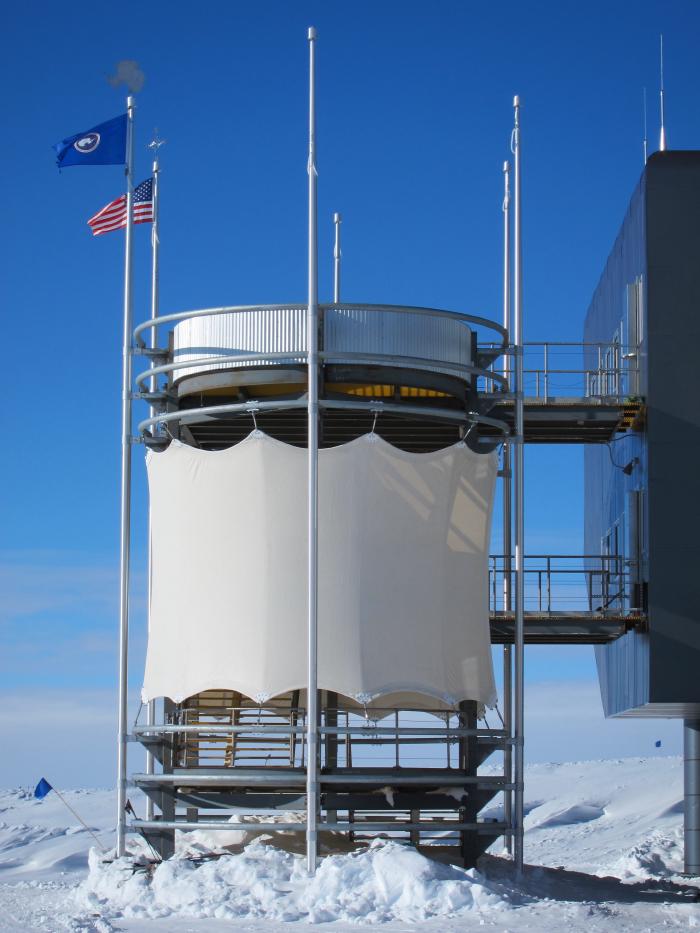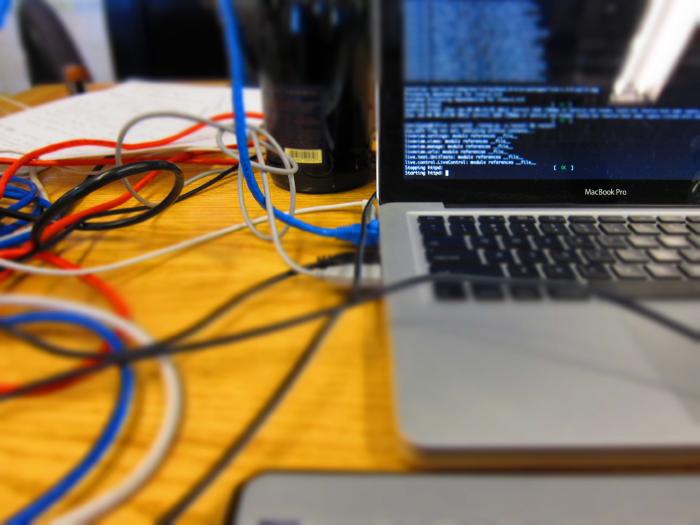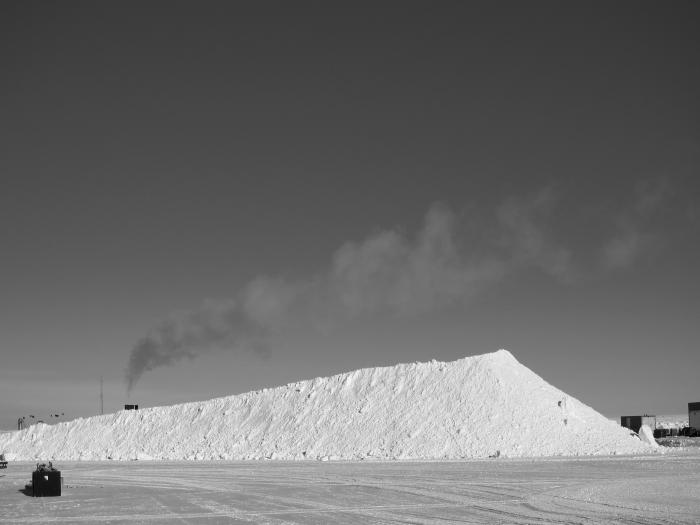The Future
southpole .....
Later: Transitions
Earlier: Sunday
Monday, Jan. 10 2011 12:05 a.m. UTC

I have a few minutes before today’s passenger flight arrives. Several 'Cubers are leaving on this flight and are very excited to go (some have been here since November). One colleague says the last thing he does on the last day is strip the linens off his bed — and only when the flight is 20 minutes out and there is no danger of it going back to McMurdo without landing and picking up passengers. Some new people are arriving too and I will go out to meet them.
Work has been going reasonably well from my standpoint. Until the last seven strings are handed over, I am basically supporting the WOs [winter-overs] and others and trying to catch up with my backlog of programming tasks. Once the final set of strings is tested, then it will be my job (with one other fellow and the winter-overs) to bring those new strings in with the other 79 and to test the completed detector for the first time. Jim H. gave us a bottle of champagne to celebrate the first 86-string IceCube test run — this will be a real milestone and I’m excited to get there, having worked on this project for many years.
Last night some colleagues gave the Sunday Science Lecture in the Galley and described a new neutrino telescope in the very early stages of construction here at the Pole. It will use radio frequencies rather than light to detect the very highest energy neutrinos. Since the target neutrino energies are so large (and the particles themselves are correspondingly so rare), the radio detector will be 80 square kilometers in size — which makes IceCube (at 1 km squared) look like a potato chip. The technologies differ in many ways from how IceCube was built and is operated; hey are exploring the use of solar and wind power to energize the stations, since it will be very difficult to supply power over such a wide area. It was neat to get a glimpse of the future.
Talking to the drillers and other IceCube folks I can sense a slightly bittersweet feeling in the air. The task of drilling and deploying all of IceCube, which seemed extremely daunting in 2005, is now done successfully, with a remarkable safety record, on schedule and on budget. It is a big victory, but we will all be doing other things sooner or later, and as with all accomplishments I think that along with the sense of victory there is a small sense of loss in completion of the task. This enterprise which consumed so much of the attention of so many of us for nearly a decade is entering a very different phase. The completed experiment will continue to run for the next 10-20 years and will continue to measure some of the most esoteric and mysterious fluxes of energy detectable by current methods, in the hopes of discovering new sources of neutrinos, and possibly stranger kinds of matter as well (supersymmetric particles, monopoles, …). Meanwhile, many of us who are not as concerned with the actual analysis per se will be moving on to other pastures. (As someone active in the actual operation of the detector, I currently still have a lot to do, but this, too, will eventually change, as things become more streamlined.)
Later: Transitions
Earlier: Sunday

